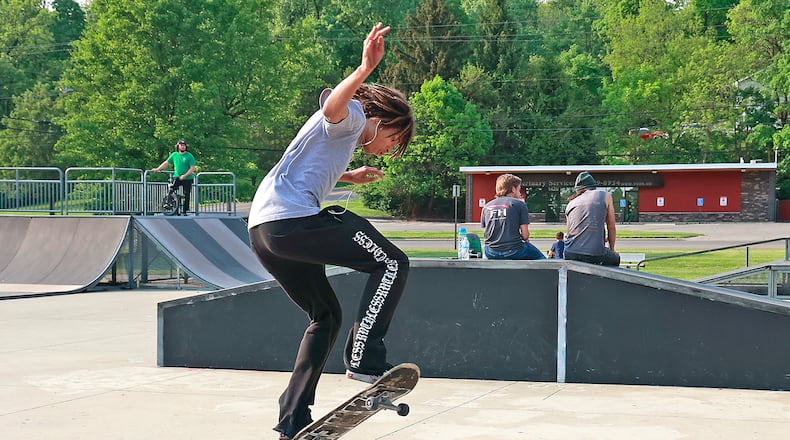“We’re just really committed to making sure we do this right, and so we don’t want to move forward until we all feel comfortable that we’ve got it all in place and ready to go,” Kennard said.
No reduction in employees is planned for the combining of the two districts, and no amenities or buildings are expected to close, Kennard said.
>> EARLIER: NTPRD, Clark County parks plan to combine this year
Collectively, NTPRD and the Clark County Park District manage roughly 2,000 acres of parkland, more than 50 miles of multi-use trails and roads, as well as 12 nature preserves, 164 acres of wetlands and more than 12 miles of river.
The combined park system will also manage the Carleton Davidson Baseball Stadium, the Chiller ice rink, Springfield’s skateboard park on Mitchell Avenue and Splash Zone, all recreation hubs currently managed by NTPRD.
Starting in 1999, the city of Springfield’s park district and the county’s park district formed a joint park district and had a contract to fulfill their programming and maintenance through the joint district. This move kicked off a 13-year, $17 million capital campaign that included the $6 million Splash Zone Family Aquatic Center, the $2.6 million Carleton Davidson Baseball Stadium and the $8.5 million NTPRD Chiller ice arena.
Other improvements included the Veterans Park amphitheater, skate park on Mitchell Boulevard and upgrades at several smaller parks countywide.
The projects were paid for through a combination of private donations and public money, including a one-year, half-percent sales tax approved by county commissioners in 2001 that generated about $5.5 million. Private donors funded about $7.6 million of the project, while $3.2 million came from the city and another $700,000 from state agencies.
That combined district was led by two governing boards and two directors. The partnership ultimately split into the Clark County Park District and NTPRD in 2009 because of financial hurdles after several attempts at passing a levy failed.
The future single-park system will be led by a single board governed by five commissioners appointed by Clark County’s probate judge, with NTPRD’s Leann Castillo taking over as the executive director of the park district. Kennard is retiring this year, Castillo confirmed in January.
Kennard said during Monday’s meeting the the city of Springfield shared a list of things that need to be completed or figured out before the merger can take place. She said one of these items is inspecting the buildings owned by NTPRD and adding them to the city’s insurance.
“These are buildings that National Trail owns that sit on and that the city of Springfield owns and, as we’ve talked about before, it makes the most sense for the structures ... to all be under one ownership,” Kennard said.
The county park district also needs to look at the technology systems NTPRD uses compared to its own to combine them and figure out who will provide what services, Kennard said.
Kim Fish, a county park district commissioner, said the combined park district would likely have a “Doing Business As” agreement with NTPRD being the legal name.
There are several options for the transition, Kennard said, including cancelling the merger all together, keeping the county as the fiscal agent instead of the city, selecting an interim director for the park district or continuing with Kennard as leader until the end of the year. Kennard said there are pros and cons to each of these options if the merger is delayed.
Park district leaders previously said a merger would allow for uniform maintenance practices, reduce overlapping services and programs and create less confusion for park goers.
The districts have talked about a potential merger for at least four years.
About the Author

